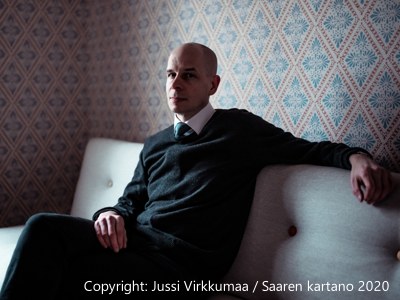Instrumentation:
Choir SSAATTBB
(every voice partly divided into two;
2 or 4 singers per voice, i.e. 16 or 32 altogether)
Brass quartet (optional)
Trumpet in Bb
Horn in F
Trombone
Tuba
Duration: ca. 16 Min. (a cappella-Version: ca. 15 Min.)
Publisher: Schott Music
Commissioned by the RIAS Chamber Choir
FP: Berlin, 21.10.2011
RIAS-Chamber Choir, Conductor: Kaspars Putnins
Introduction
German baroque poetry has fascinated me for a long time. When arranging the libretto for my chamber opera Dafne (after Martin Opitz, written in 2005), I integrated several poems by Opitz into his play, and it was also the first time for me to compose extended choir passages. After completing this work, I felt the need to explore the combination of choir and baroque texts in a longer, independent choir composition. I selected poems by Christian Hoffmann von Hoffmannswaldau, Andreas Gryphius, Martin Opitz, Georg Philipp Harsdörffer, Barthold Hinrich Brockes und Friedrich von Logau. Apart from von Logau’s aphoristic Trost, the texts have been shortened and re-arranged extensively. The similar topics, using also closely related manners of expression, and the tendency to redundant structures – often, one thought repeatedly phrased in many different ways – makes it even possible exchange lines between different poems.
The way the texts are dealt with changes between coherent setting and using language as sound material and structural element. An important aspect is the technique of letting words or syllables rotate through the whole choir, which – supported by different dynamic levels and an often slightly imprecise unisono – creates a panorama-like effect. The at times harsh sound of the baroque language, rich with consonants, the weighty metaphors, but also the squiggly, sometimes weird expressions are mostly put into music rather unobtrusively. Especially, a duplication of the declamatory character is avoided, while some beautiful images are picked up and transformed into sounds. The choir sound as such remains mostly „intact“ in a traditional sense; the pitch material is even handled very restrictively – only one passage (the beginning of the IIIrd movement) makes use of the full chromatic scale. The abstinence from spectacular effects draws the attention on comprehensible harmonic structures, dynamic nuances, a wide range of voice and register combinations and subtle variations of the texts in the individual parts.
Formally, the whole cycle of seven pieces is grouped into larger sections of several movements. The motto-like beginning is being transformed in both text and harmony into the Gryphius movement in which the choir is gradually spread from a dull medium region to more contrasting registers until the sound fades away „wie Rauch“ [like smoke] and turns into fine fizzling. A short interlude – the only section that features the brass quartet – leads to Opitz‘ Echo, that moves from a dark, weighty, dissonant sound of the male voices into a more and more lighter atmosphere, which is then taken over by the rather plain, melancholic autumn landscape of Harsdörffer. The following core piece of the cycle, based as well on autumnal poem by Brockes, contrasts heavily to the simplicity of the preceding movement. The picture of a rain shower of falling leaves, meditatively circling around itself, is transferred into an extended, complex „spiral“ soundscape ceaselessly rotating in up to 16 individual parts, each of them exploring a slightly different version of the poem’s text. While the choir expands to the widest range of registers and highest density of the piece, the expression, following the style of Brockes‘ language, remains rather unaffected. The last section resumes the motto of the beginning, exploring the two entwined Hofmannswaldau texts more thoroughly, and leads to the short epilogue which serves as an ironic comment on baroque world-weariness in form of a merry-go-round with the poem’s syllables rotating wittily fast through the choir.
The brass quartet’s part supports, accompanies and partly complements the choir in an almost totally merging way. There is hardly a note that is not directly coupled with one of the choir’s voices. However, using or ommitting the brass instruments also affects the charakter of the choir’s performance – in this way, two equal versions of the piece are combined in one score, and vergehn wie Rauch may be performed a cappella in both the original and today’s sense of the term.
